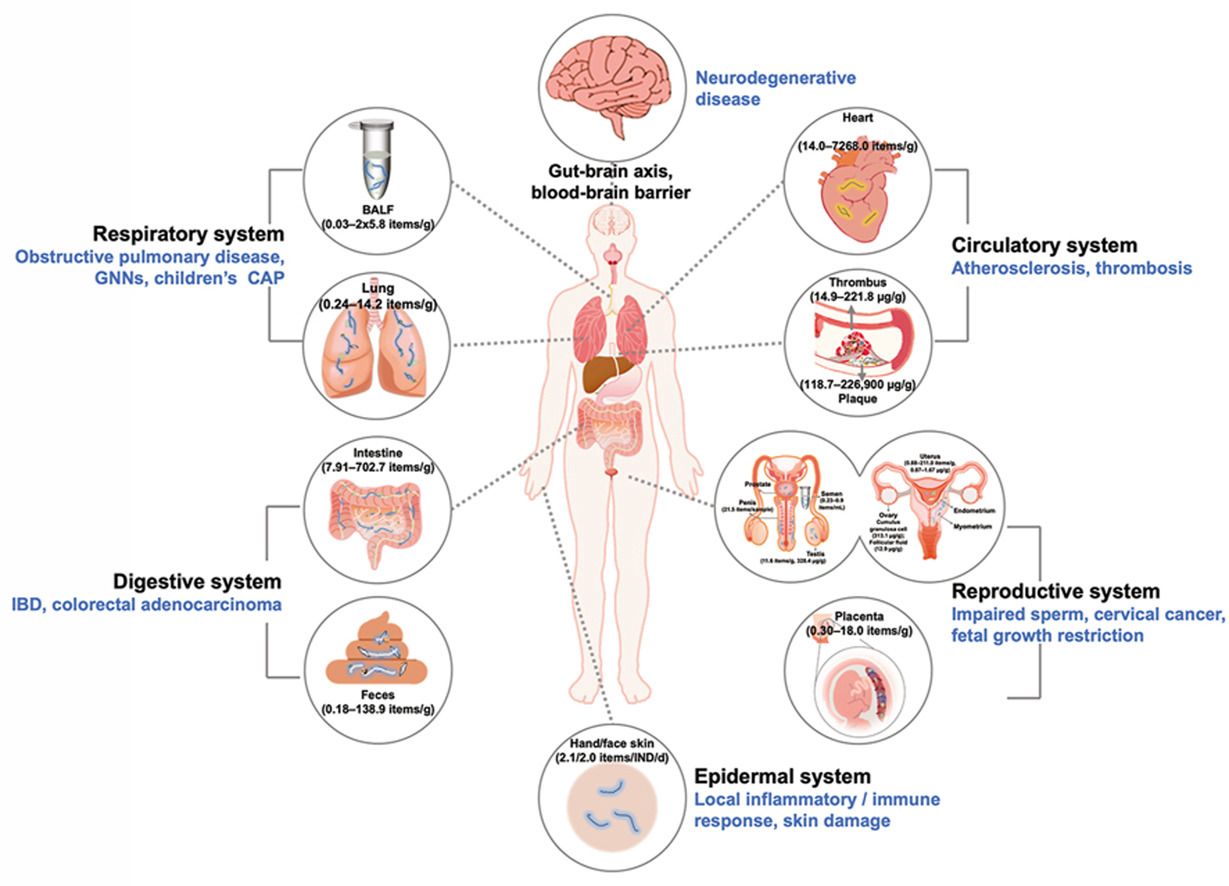The alarming correlation between microplastics and diseases 🚨
Follow us on Google News (click on ☆)
Researchers from Zhejiang Agriculture and Forestry University conducted an in-depth meta-analysis on the presence of micro and nanoplastics (MNPs) in human tissues. Their work, published in TrAC Trends in Analytical Chemistry, is based on 61 research articles and 840 toxicological studies to explore the mechanisms of action of MNPs.

Credit: TrAC Trends in Analytical Chemistry (2024)
Analytical techniques, such as spectroscopy and microscopy, have enabled the identification of polymer types in different tissues. Toxicological studies have highlighted cellular responses such as oxidative stress and inflammation, suggesting a link between MNPs and specific diseases.
MNP particles have been detected in several body systems, including the digestive and respiratory systems. A positive correlation has been observed between the abundance of these particles and disorders such as inflammatory bowel disease and cervical cancer.
Toxicological tests indicate that MNPs could trigger harmful cellular responses, including mitochondrial dysfunction and apoptosis. These findings raise concerns about the impact of MNPs on human health, particularly regarding neurodegenerative diseases.
A key observation from this meta-analysis is that MNP levels are higher in damaged tissues than in healthy tissues. This suggests a potential relationship between MNP accumulation and local pathology, although the nature of this relationship remains to be elucidated.
The question of whether MNPs cause damage or accumulate in already damaged tissues remains open. This study paves the way for future research to explore these mechanisms and develop mitigation strategies.
Finally, the lack of conventional methods to remove microplastics from the environment or human tissues represents a major problem. Current efforts focus on discovering methods to mitigate environmental impact, but the complexity of the particles and their chemical diversity make this task particularly challenging.
How do microplastics affect human health?
Microplastics, by penetrating human tissues, can induce oxidative stress and inflammatory responses. These cellular reactions can damage tissues and contribute to the development of diseases.
Oxidative stress is an imbalance between free radicals and antioxidants in the body, leading to cellular damage. Microplastics can exacerbate this imbalance, increasing the risk of chronic diseases.
Inflammatory responses, on the other hand, are immune system reactions to foreign agents. Microplastics can trigger these responses, leading to chronic inflammation that can damage tissues and organs.
Finally, microplastics can also disrupt mitochondrial functions, essential for energy production in cells. This disruption can lead to apoptosis, or programmed cell death, contributing to tissue degeneration.
What are the methods for detecting microplastics in human tissues?
The detection of microplastics in human tissues relies on advanced analytical techniques such as spectroscopy and microscopy. These methods allow for the identification and quantification of the types of polymers present.
Spectroscopy uses light to analyze the chemical properties of materials. It is particularly useful for identifying types of plastics in tissue samples.
Microscopy, on the other hand, allows for the visualization of microplastic particles at a microscopic level. This technique is essential for understanding the distribution and concentration of MNPs in tissues.
Finally, pyrolysis-gas chromatography/mass spectrometry is another method used to analyze polymers. It allows for the breakdown of samples into their chemical components for precise identification.